Understanding Tooth Loss in an Aging Population
As the population ages, oral health has become a critical marker of overall well-being for seniors. Tooth loss, a common yet preventable condition, offers insights into the broader aging experience and systemic health of older adults. This article explores statistical trends, underlying causes, demographic disparities, and the profound health and quality-of-life implications of tooth loss in seniors. Beyond the numbers, it discusses essential preventive strategies, tailored dental care approaches, and policy initiatives aimed at improving oral health outcomes in aging populations.
The Statistical Landscape of Tooth Loss in Seniors
Prevalence of tooth loss among seniors
Recent data indicates that tooth loss remains a common health concern among older adults. As of 2015–2018, approximately 17.3% of seniors aged 65 and older have no remaining teeth, which means they are edentulous. However, this figure shows a positive trend, as the overall prevalence of complete tooth loss has decreased over the decades, dropping from about 29.9% in 1999–2000 to 13.1% in 2017–2018. On average, seniors in this age group retain around 20.7 teeth, with older seniors (75+) tending to have fewer remaining teeth than those aged 65–74. For detailed statistics on Tooth loss prevalence in seniors and trends over time, see the National Institute of Dental and Craniofacial Research data.
Trends over time in tooth retention and edentulism
Improvements in dental health practices, access to preventive care, and fluoride use have contributed to these positive trends. The decline in rates of severe tooth loss suggests better awareness and early intervention strategies are making an impact, as discussed in Oral health for older adults and Aging and Dental Health.
Demographic differences in tooth loss
Disparities among different demographic groups are evident. Non-Hispanic Black seniors have a notably higher prevalence of complete tooth loss (about 25.4%) compared to Hispanic (15.3%) and non-Hispanic White (10.9%) seniors. Socioeconomic factors strongly influence oral health; seniors with less than a high school education are significantly more likely to experience total tooth loss—up to 31.9%—versus only 9.5% among those with higher education. Additionally, lower-income seniors tend to have worse oral health outcomes, with missing teeth and untreated decay being more prevalent. For more on Tooth loss trends by age and race and Income and education impact on tooth loss, refer to CDC and NIDCR reports.
Impact of socioeconomic status and smoking on tooth loss rates
Socioeconomic status is a critical determinant of oral health. Lower-income seniors often face barriers to regular dental care, leading to higher rates of decay and tooth loss. Smoking also plays a major role; current smokers are approximately three times more likely to have lost all their teeth compared to non-smokers. Chronic conditions such as diabetes and cardiovascular disease are associated with greater tooth loss, further highlighting how systemic health influences oral outcomes. For detailed information on Smoking and tooth loss in seniors and Chronic health conditions and tooth loss, refer to the CDC oral health resources.
| Demographic Group | Prevalence of Complete Tooth Loss | Additional Notes |
|---|---|---|
| Seniors aged 75+ | 17.8% | Higher than younger seniors, indicating increased risk with age (CDC Tooth loss by age group) |
| Non-Hispanic Black seniors | 25.4% | Significantly higher compared to other racial groups (Tooth loss prevalence among non-Hispanic black older adults |
| Hispanic seniors | 15.3% | Moderate prevalence, with disparities in care access |
| Non-Hispanic White seniors | 10.9% | Lowest prevalence among studied groups |
| Less than high school education | 31.9% | Strong correlation with socio-economic disadvantages |
| Higher income seniors | 9.5% | Better access to dental care and preventive measures |
| Current smokers | Higher likelihood of complete tooth loss | Smoking accelerates periodontal destruction (Smoking and tooth loss) |
Overall, although progress has been made, disparities continue to affect vulnerable populations. Policies aimed at improving access to dental services for low-income, minority, and rural seniors are essential for further reducing tooth loss and promoting healthier aging. For insights into Unique oral health needs among elderly individuals and Improving oral health care access for seniors, policy-focused readers can refer to the linked resources.
How Aging Alters Oral Health and Contributes to Dental Conditions
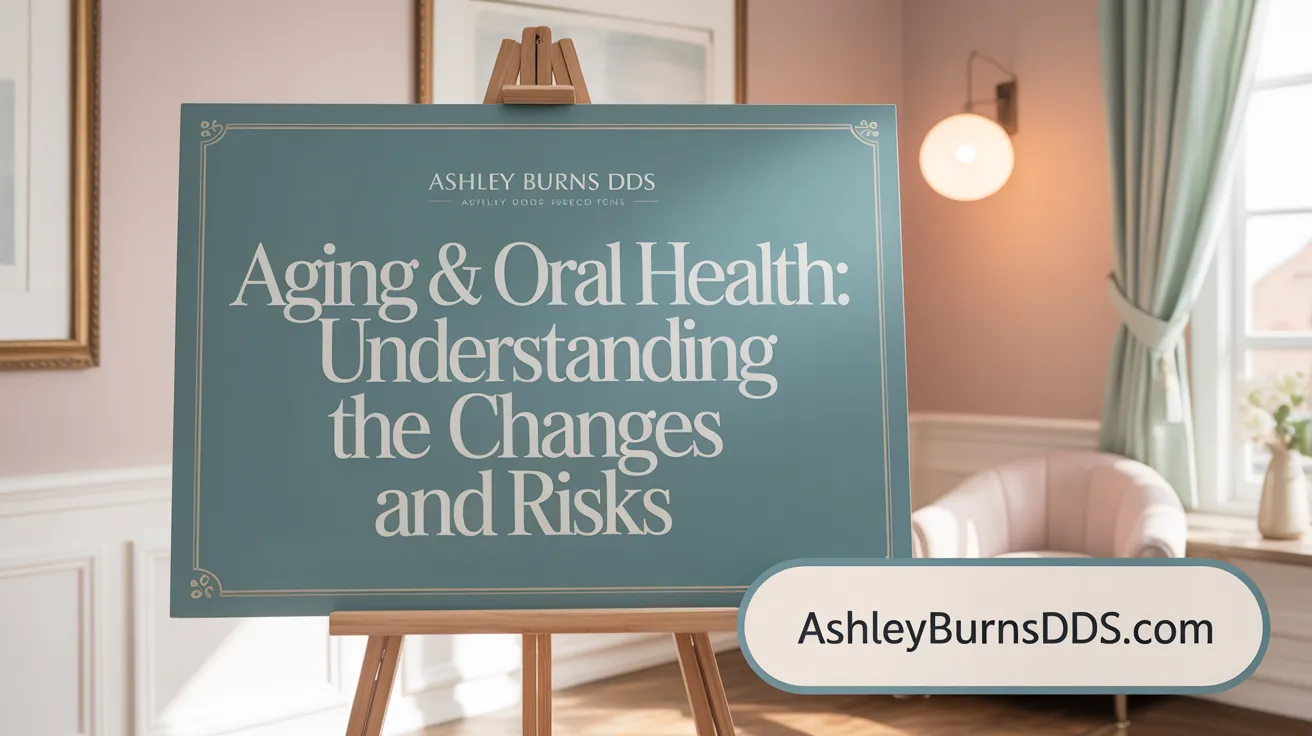
How does aging impact oral health and what common dental conditions affect older adults?
Aging brings about significant changes in the health of teeth and gums. Physiological shifts such as decreased salivary flow, thinning and less elastic oral tissues, and reduced bone density make older adults more vulnerable to oral problems. Saliva plays a vital role in protecting teeth; its decline—often due to medications—can lead to dry mouth (xerostomia), increasing the risk of cavities and gum disease.
Older adults frequently face conditions like periodontal disease, which affects the supporting structures of the teeth, and root caries, especially as gums recede exposing root surfaces. These issues can progress without symptoms until advanced, leading to tooth loss. Other common concerns include oral infections, oral cancers, and increased sensitivity stemming from enamel wear. The immune system's weakening with age also diminishes the body's ability to fight oral infections, compounding oral health challenges (Aging and dental health overview).
What are the main causes and risk factors of tooth loss in the elderly?
The primary causes of tooth loss in seniors are periodontal disease and dental caries. Gum disease, characterized by bacterial infection and inflammation, is the leading contributor, often exacerbated by poor oral hygiene and smoking (Impact of smoking on tooth loss. Cavities or dental caries, especially rooted caries, develop more readily due to dry mouth and teeth exposed from gum recession (Root caries risk in seniors.
Risk factors include not only oral hygiene practices but also health conditions such as diabetes and cardiovascular disease, which impair immune response and healing (Chronic conditions linked to tooth loss. Medications for chronic illnesses often cause dry mouth, further raising decay risks. Socioeconomic factors—like low income and limited access to dental care—also play a role in increased tooth loss (Income and education impact on tooth loss). Physiological aspects of aging—such as reduced saliva production, diminished tissue resilience, and immune decline—heighten susceptibility to infections and tissue breakdown, leading to higher chances of losing teeth over time (Aging and dental health.
The Health Implications of Tooth Loss in Older Adults
What are the health consequences of tooth loss and poor oral health in older adults?
Tooth loss and inadequate oral health have profound effects on the well-being of older adults. One primary impact is on nutrition, as missing teeth and gum disease hinder effective chewing, leading to difficulty consuming a balanced diet rich in fruits, vegetables, and proteins. This nutritional compromise can contribute to systemic health issues such as cardiovascular disease, diabetes, and gastrointestinal problems (source.
Beyond physical health, oral health deterioration is closely linked to cognitive decline. Research shows that older adults with fewer teeth are at a higher risk of developing dementia and general cognitive impairment. In fact, each lost tooth is associated with a 1.4% increase in the risk of cognitive decline. This connection is thought to involve factors like difficulty chewing influencing nutrition, increased inflammation from periodontal disease, and bacteria entering the bloodstream (source, source).
Furthermore, the presence of oral infections and diseases can elevate the risk of mortality. Studies suggest that individuals with fewer than ten natural teeth or who do not use dentures have higher rates of death from all causes, primarily due to the systemic effects of chronic oral infections and inflammation (source, source).
Psychosocially, poor oral health can cause speech difficulties and reduce self-esteem. This can lead to social withdrawal and depression, negatively affecting mental health and overall quality of life. Thus, maintaining good oral health is essential not only for oral function but also for broader health and societal engagement in older adults (source, source).
Maintaining regular dental care, practicing good oral hygiene, and addressing issues like dry mouth and gum disease are critical strategies for mitigating these risks. Ultimately, enhancing oral health among seniors is a vital component of promoting healthy aging and extending quality of life (source, source).
Preventing Tooth Loss: Strategies for Maintaining Senior Oral Health
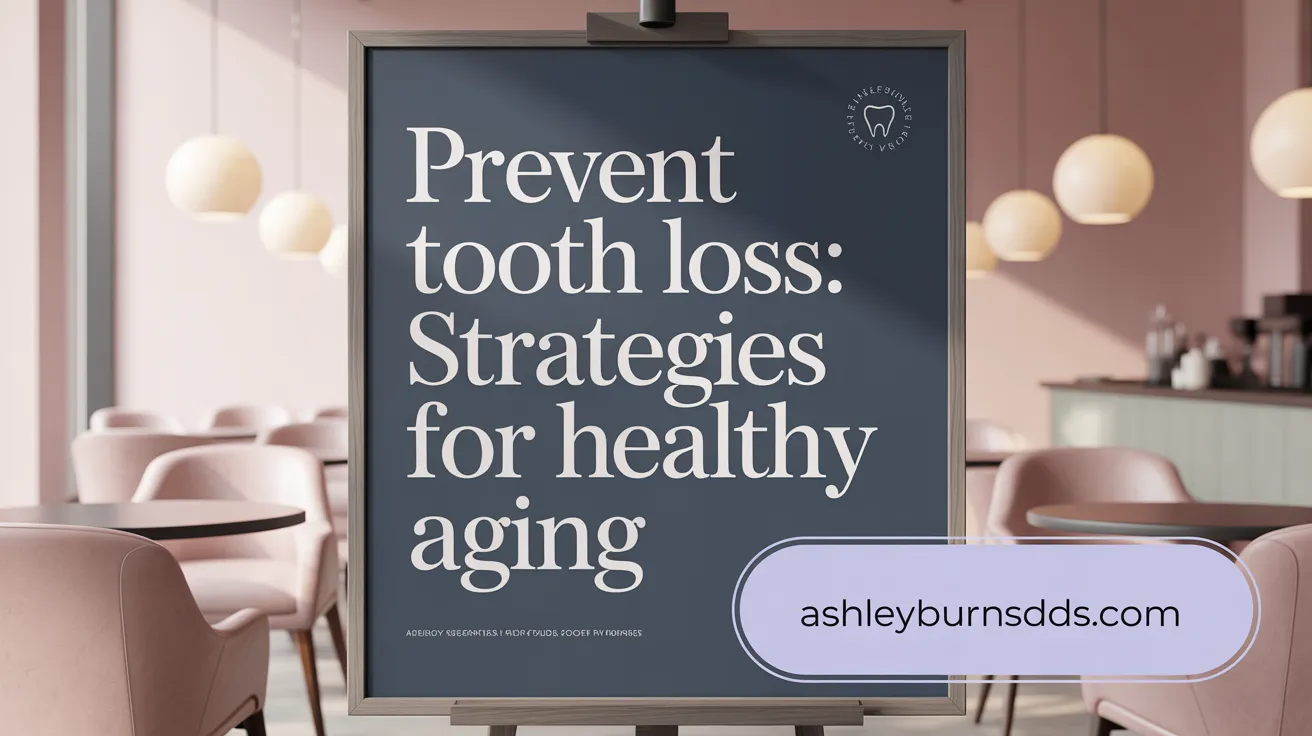
What preventive strategies can help maintain oral health in the elderly?
Maintaining oral health in seniors is crucial to prevent tooth loss and other systemic health issues. Effective strategies include routine oral hygiene practices such as brushing twice daily with fluoride toothpaste and daily flossing to remove plaque. Regular dental visits, ideally every six months, help detect issues early and provide professional cleanings that remove tartar buildup (oral health for older adults, oral health tips for adults, ADA aging and dental health.
In addition, avoiding tobacco products significantly reduces the risk of gum disease and tooth decay (oral health and tobacco impact. Managing systemic conditions like diabetes and hypertension is essential, as these illnesses can exacerbate oral health problems (oral health and chronic conditions, oral health and aging). Proper dietary modifications, including reducing sugar intake and consuming calcium- and vitamin C-rich foods, also support healthy teeth and gums (oral health nutrition, oral health dietary tips.
Use of fluoride treatments, both topical and in drinking water, strengthens enamel and decreases the likelihood of cavities (prevention of dental disease with fluoride). For dry mouth—a common issue among elderly due to medications and health conditions—hydration, saliva substitutes, sugarless gum, or candies with xylitol can stimulate saliva production (managing dry mouth, xerostomia and oral health.
Overall, a combination of good daily oral care, professional dental management, lifestyle changes, and systemic health control forms the foundation of preventing tooth loss in seniors, ultimately contributing to a better quality of life and overall health (improvements in senior oral health, oral health and aging overview.
Guidance for Elderly Individuals and Caregivers on Dental Care
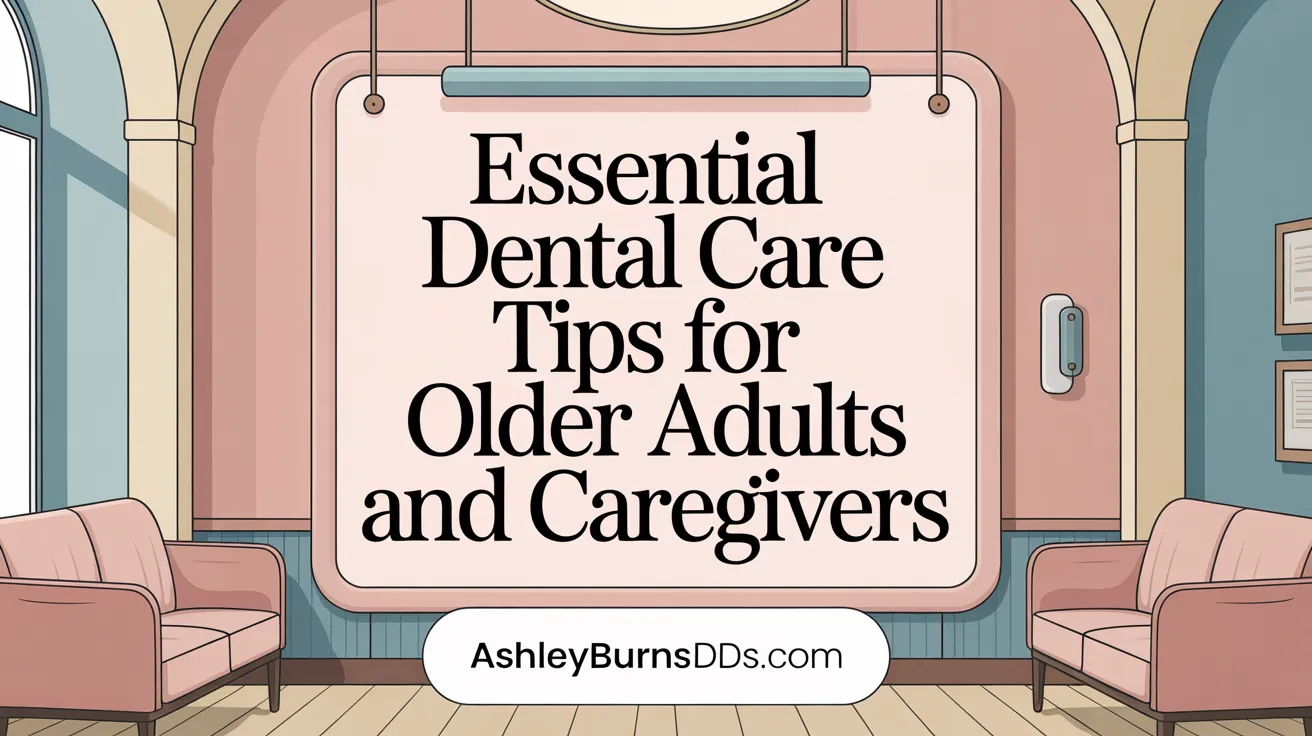
What dental care tips are recommended for elderly individuals and their caregivers?
Proper oral hygiene is essential for maintaining health and quality of life in older adults. Caregivers should assist with daily routines by helping seniors brush their teeth twice a day with fluoride toothpaste, using soft-bristled brushes to prevent gum irritation. It’s also important to incorporate interdental cleaners like floss or water flossers, especially for those with limited manual dexterity (Oral Health Information For Older Adults, Caregiver's Guide to Dental Health).
Managing dry mouth, a common condition caused by medications or aging, is vital. Strategies include encouraging hydration, using alcohol-free mouth rinses, and employing saliva substitutes or humidifiers to keep the mouth moist (Aging and Dental Health, Oral health for older adults).
Diet plays a role as well; a balanced diet low in sugar and processed foods supports oral health. Regular dental visits every six months or as recommended help prevent issues like cavities and gum disease, crucial for those with existing dental concerns or dentures (Oral health for older adults, Dental Care Among Adults Age 65 and Older).
For individuals with dentures, caregivers should ensure proper cleaning daily, soaking overnight to prevent damage, and checking for fit and comfort. Regular professional adjustments and inspections ensure dentures did not lose fit, which can cause sores or difficulty eating (Caregiver's Guide to Dental Health, Oral health improvements in older adults.
Caregiver involvement extends to monitoring oral health for early signs of problems such as mouth sores, unusual spots, or persistent pain. Demonstrating procedures—like brushing or cleaning dentures—using the 'tell-show-do' approach encourages cooperation and independence (Aging and Dental Health, Caregiver's Guide to Dental Health.
When working with seniors with cognitive impairments, it’s important to communicate clearly, use simple language, and involve caregivers or family members. Wearing gloves, washing hands thoroughly, and practicing patience and gentle touch are critical during oral care routines (Aging and dental health overview, Caregiver's Guide to Dental Health.
Overall, consistent daily oral hygiene, regular dental professional assessments, good nutrition, and attentive caregiver support are vital to preserving oral health and preventing infections or discomfort (Oral health guide for older adults, Oral health for older adults).
Managing dry mouth and denture care
Addressing dry mouth involves increasing fluid intake, avoiding alcohol and tobacco, and using products like saliva stimulants or artificial saliva if recommended (Oral health for older adults, Aging and Dental Health. Proper denture care includes cleaning with gentle soap or denture cleaners, avoiding abrasive pastes, and storing dentures properly overnight (Caregiver's Guide to Dental Health.
Regular inspection for irritation or soreness helps prevent infections. Ensuring dentures fit well avoids gum sores and facilitates comfortable chewing and speaking (Oral health improvements in older adults, Tooth loss in older adults in nursing homes).
Caregiver roles and communication strategies for cognitively impaired seniors
Caregivers should tailor communication to the individual’s needs, using face-to-face speaking, large print, and contrasts for those with visual or hearing impairments (Aging and dental health overview. Educating caregivers about early signs of oral problems and proper techniques ensures consistent care (Caregiver's Guide to Dental Health.
Monitoring and early detection of oral health issues
Regularly checking for signs such as redness, swelling, mouth pain, or sores allows for timely intervention. Establishing routine dental visits and daily self-care routines can significantly reduce the risk of complications (Oral Health Information For Older Adults, Caregiver's Guide to Dental Health.
Exploring the Link Between Oral and Systemic Health in Aging Populations
How is oral health linked to systemic health issues such as cognitive decline in the elderly?
Research has demonstrated significant associations between oral health, especially periodontal disease and tooth loss, and systemic issues like heart disease, diabetes, and cognitive decline. Studies indicate that periodontal inflammation and pathogens can enter the bloodstream, triggering systemic inflammatory responses that may contribute to vascular problems and neurodegeneration. Importantly, older adults with multiple missing teeth and untreated periodontal conditions face a higher risk of developing dementia and other cognitive impairments. The presence of oral infections and chronic inflammation may accelerate pathology in brain and cardiovascular tissues, underscoring the interconnected nature of oral and systemic health. For more detailed information, see Oral health and aging: Link between poor oral health and dementia and Tooth loss in older adults is linked to increased risk of dementia.
What are some recent research findings regarding aging and oral health?
Recent research emphasizes that older adults are retaining more natural teeth than previous generations, but they still experience high rates of periodontal disease and dental caries. Studies reveal a bidirectional relationship between oral health and overall health, noting that poor oral hygiene correlates with increased vulnerability to chronic diseases. Evidence supports integrating oral healthcare into general geriatric medical practices, which can improve early detection and management of oral infections that influence systemic health outcomes. Additionally, findings highlight that oral health deterioration with age not only affects quality of life but also contributes to systemic inflammation, which may heighten risks for cardiovascular events and cognitive decline. This growing body of evidence advocates for comprehensive, interdisciplinary approaches to care that address both dental and systemic health in aging populations. Relevant literature includes Aging and dental health and Oral health in older adults and its systemic associations.
Barriers to Dental Care Access Among Older Adults and Policy Solutions
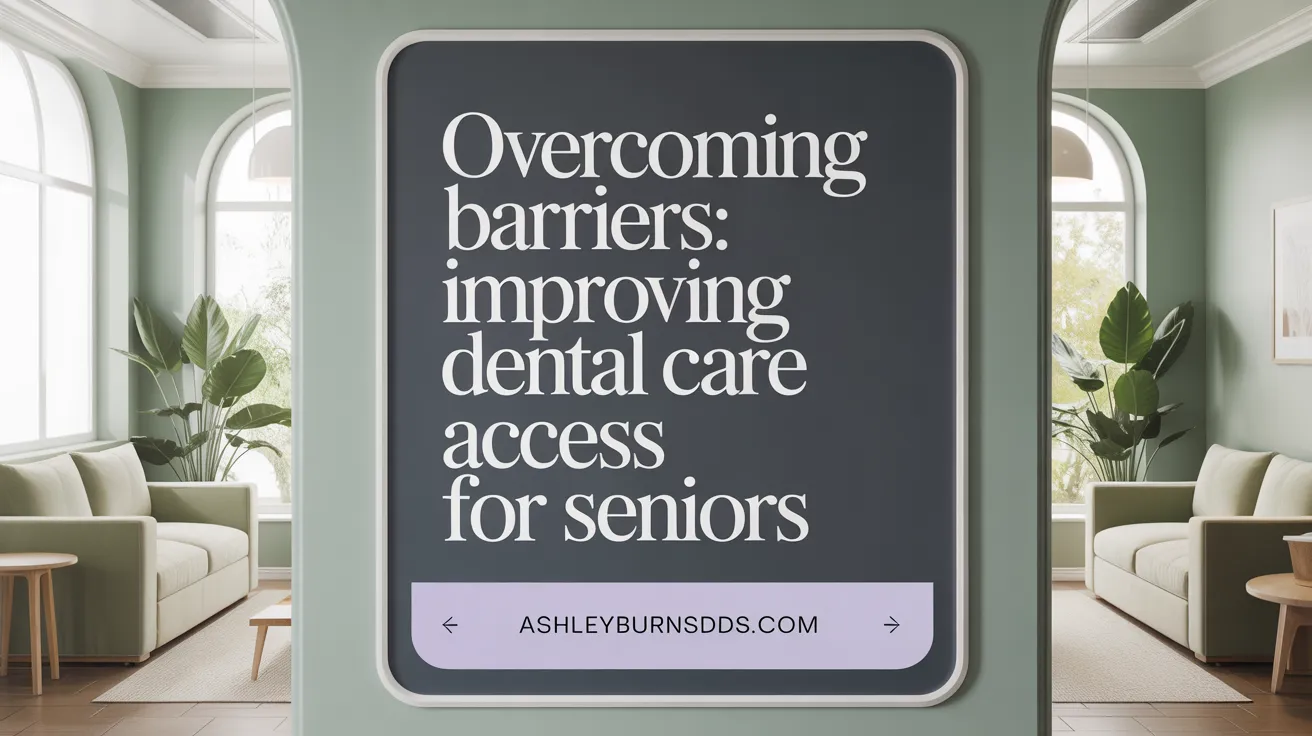 Many older adults face significant challenges in maintaining access to dental care, which affects their overall health and quality of life.
Many older adults face significant challenges in maintaining access to dental care, which affects their overall health and quality of life.
Financial and insurance coverage challenges are among the most significant barriers. Most seniors lack dental insurance, with only about 22-30% covered by private or Medicare plans that do not typically include comprehensive dental benefits. Consequently, a large proportion, over 65 million adults, pay out-of-pocket for dental services, limiting regular checkups and treatments (Dental insurance coverage among adults aged 65 and over in 2017, Dental Care Among Adults Age 65 and Older.
Physical and logistical barriers further hinder care. Age-related mobility issues, physical limitations like arthritis, sensory impairments, and long distances to dental providers make it difficult for many seniors to seek and receive care. Transportation problems, especially in rural areas where over 25% of seniors have not visited a dentist in years, exacerbate these issues (Caregiver's guide to dental health, Unique oral health needs of elderly individuals).
Impact of provider shortages and awareness gaps also plays a role. There are fewer dental professionals trained in geriatric care, and many older adults are unaware of available services or how to navigate the healthcare system effectively. These gaps contribute to underutilization of dental services, particularly among marginalized groups such as minorities and those living in poverty (Oral health of older adults, Oral health and aging).
To address these issues, several public health initiatives and policy proposals have emerged. Efforts include expanding dental coverage through legislation like the Medicare Dental, Vision, and Hearing Benefit Act, which aims to incorporate dental benefits into Medicare. Increasing funding for community-based programs, mobile clinics, and teledentistry can improve access, especially for homebound seniors (Unique oral health needs of elderly individuals, Improving oral health care access for older adults).
Policies also focus on training healthcare providers in geriatric oral health and enhancing public awareness about the importance of maintaining oral health throughout aging (Aging and Dental Health, Oral health for older adults - Quick Tips. These combined strategies seek to reduce disparities, improve preventive care, and ultimately support better health outcomes for older populations.
Future Outlook: Projected Trends and the Importance of Integrating Oral Health into Healthy Aging
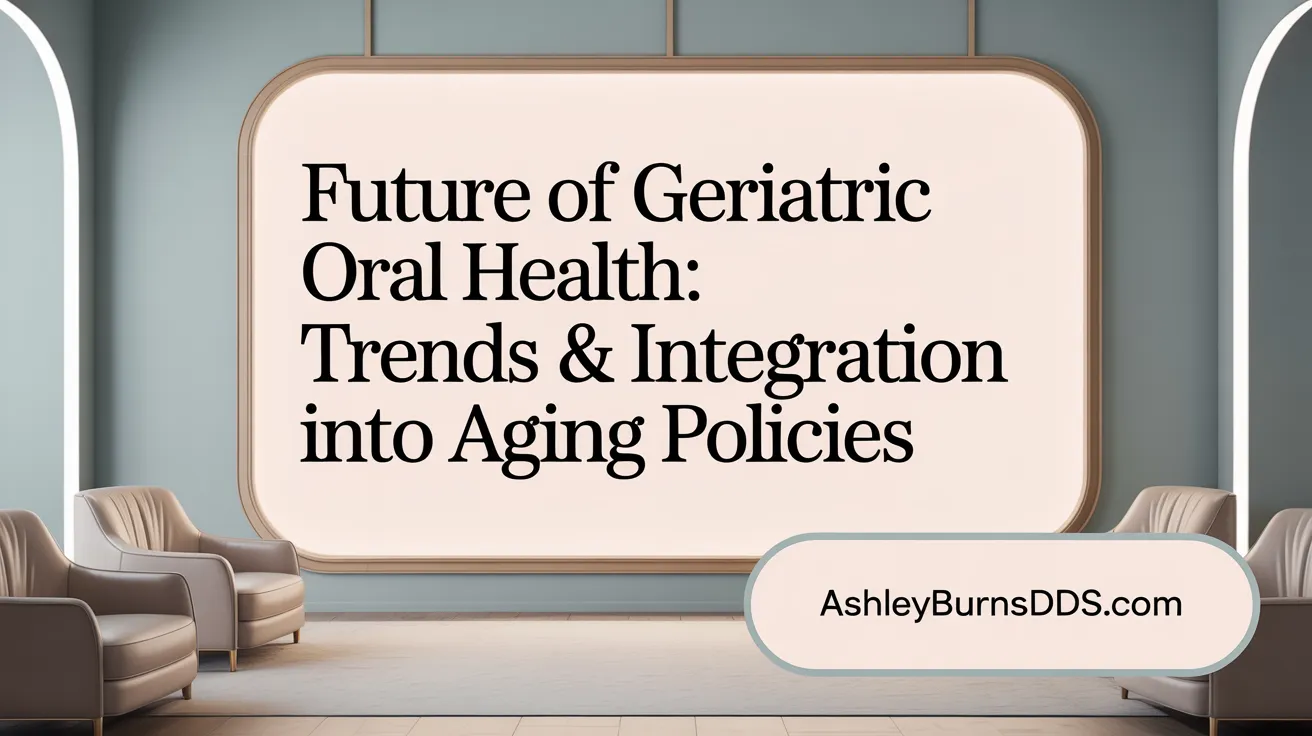
What are the projected trends for oral health and tooth loss in aging populations?
Forecasts for oral health in older adults suggest that despite ongoing improvements in dental care, the global increase in longevity will continue to pose significant challenges. As the population of seniors grows—expected to reach 72 million in the U.S. alone by 2030—the emphasis on retaining natural teeth and preventing dental diseases will intensify. Advances such as minimally invasive treatments, the use of silver diamine fluoride for arresting root caries, and the expansion of telehealth services are expected to mitigate some traditional barriers.
Nevertheless, age-related physiological changes, along with chronic illnesses, medication side effects like dry mouth, and cognitive impairments, will remain key factors influencing oral health outcomes. Innovative care delivery models, particularly mobile clinics and teledentistry, will become increasingly crucial to provide accessible, tailored, and preventive care for the expanding elderly demographic.
Overall, the trend toward better oral health awareness and preventive practices is expected to reduce severe tooth loss, but disparities driven by socioeconomic and racial factors will require targeted strategies for equitable care. For detailed data on tooth loss trends in seniors and disparities, see resources from the National Institute of Dental and Craniofacial Research.
Why is integrating oral health into healthy aging efforts important?
Integrating oral health within holistic aging strategies is essential because oral conditions deeply impact overall health, nutrition, and quality of life. Poor oral health can exacerbate chronic conditions such as diabetes, cardiovascular diseases, and respiratory illnesses, and can even influence cognitive health by elevating the risk of dementia, as shown in studies about tooth loss and cognitive decline.
By embedding oral health into general healthcare planning, screenings, and policies, health systems can facilitate early detection and intervention, reducing long-term health costs and improving life quality for seniors. This integrated approach promotes comprehensive, person-centered care, ensuring that oral health is recognized as a vital component of healthy aging.
Furthermore, policy initiatives like adding dental coverage to Medicare, expanding community outreach, and training healthcare professionals on geriatric oral health are critical. Such efforts support equitable, preventive, and restorative oral health services, ultimately fostering healthier, more independent aging populations.
More Information
For deeper insights into future trends and integration strategies, searching with the query 'Future trends in oral health for seniors and healthy aging integration' can provide access to recent research, policy updates, and innovative programs shaping the next era of geriatric oral health care. Useful sources include:
- Aging and dental health overview by ADA
- Oral health and healthy ageing global perspectives
- Tooth loss prevalence and trends among seniors
- Oral Health disparities and policy solutions
Toward a Future of Better Oral Health in Aging
The landscape of senior oral health is improving, evidenced by declines in total tooth loss and greater retention of natural teeth, yet disparities persist. Aging brings unique challenges that heighten vulnerability to dental disease and tooth loss, which in turn affect nutrition, systemic health, and cognitive well-being. Preventive care, early intervention, and caregiver involvement are critical to sustaining oral health in older adults. Addressing barriers to dental care access through policy reforms and integrating oral health into broader healthy aging efforts will be vital to ensuring that the aging population enjoys not only longer lives but healthier and more fulfilling ones. Continued research, innovative care models, and public health initiatives offer hope for closing gaps and enhancing quality of life for seniors worldwide.
